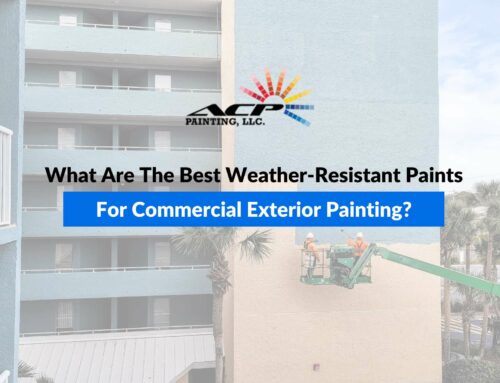Metal structures and furnishings are used in commercial and residential settings. Metal is elegant, durable, and performs better than other materials in climates with excessive dry heat. This material has many advantages, but the one major disadvantage that can’t be avoided is the rust factor. With enough exposure to oxygen and moisture, metal will rust, making your once beautiful structure look unattractive.
Paint can be used to restore metal pieces. Instead of spending more money to replace it, you can bring its beauty back with a new coat of paint. Painting metal requires skill and proper preparation to ensure you get a long-lasting finish.
What Causes Metal to Rust?
Rust is the result of a natural process where the iron in metals comes into contact with oxygen and water, causing it to corrode and deteriorate. When iron and moisture combine, it is called oxidation. The chemical reaction produced causes ferric oxide to form, also known as rust. It is usually red or black. The rusting process occurs more quickly when it is exposed to salt, acids, chemicals, and changes in temperature.
Rust causes the metal to decay, becoming flaky, weak, and crumbly. This means a metal structure can be one of the strongest materials and become one of the weakest thanks to rust. This is a serious problem for commercial metal structures and items such as manufacturing equipment, fences, bridges, overpasses, railings, and water towers.
Can You Paint Over Rusted Metal?
Painting rusted metal is not only possible but can produce beautiful results. In fact, paint can actually protect the metal surface by preventing oxygen and water from coming into contact with metal.
Restoring rusted metal with paint requires a proper understanding of what must be done to ensure the paint will adhere to the surface. This is especially true for large metal structures. That’s why it’s best to hire a professional who has the proper tools and knowledge of painting metal.
Here are a few steps that are necessary before applying any paint to a rusted metal surface.
1. Remove the Rust
The most important step in painting any surface is prepping it for paint. Painting metal is no different. You must remove as much loose rust as possible; otherwise, the metal will continue to shed the loose rust, pushing through the dried paint coat until it blisters or peels off.
If there is a considerable amount of rust still underneath the paint, it will flake off, leaving an unsightly mess. Rust stains can bleed through the coat of paint and discolor it. An uneven surface will also show through the paint and results in a poorly done paint job.
To avoid this, detach any nails, screws, or other hardware from the metal surface. Use a wire brush or sandpaper to scrape off the rust and any loose paint. When all of the rust flakes off, remove dirt and grease with a degreaser or solvent cleaner. Let the metal air-dry completely before applying the primer.
By carefully preparing and smoothing the surface before painting, you can minimize the chance for bubbles and dirt to appear.
2. Paint Metals with Surface Rust Only
If rust has eaten through the metal, applying paint to the surface will do no good. Visible holes or a weakened structure that has become bendable means the corrosion has gone on too long and paint will not restore it. The only solution is to replace the item. That’s why it’s so important to maintain an expensive metal structure to prevent rust from forming in the first place.
3. Rust-Inhibiting Primer Coat
Apply a quality metal paint primer that is formulated specifically for exterior use on metal. The primer will increase paint adhesion and prevent discoloration. Allow the primer coat to dry before painting the metal structures.
Professionals use an industrial grade water-based alkyd urethane enamel paint. This paint is ideal for metal structures that get a lot of use and are exposed to the elements. It is durable and aesthetically pleasing.
4. Prevent Corrosion
There are additional ways to protect metal surfaces from corrosion. Replace standard nails or screws with galvanized or non-rusting hardware. Prime with a rust-inhibiting primer or finish. Apply protective coatings over the metal that acts as a barrier.
Trusted Metal Painters
ACP Painting has painted and restored hundreds of different types of metal structures. We have the experience, products, and equipment to handle commercial and residential metal painting projects. Our team has worked with local governments, HOAs, and commercial enterprises to maintain their metal structures.




